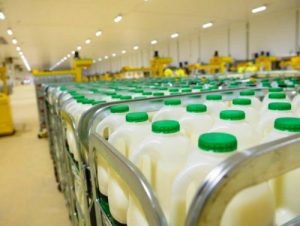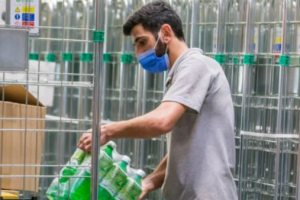Transparency is key when consumers are vulnerable

FOOD and drink, like many sectors, is heavily regulated – from safety and provenance to packaging, labelling and even advertising, there is much to keep on top of
Whilst the regulation that exists in relation to all products is broadly similar the difference within this industry is the associated risks and consequences when something goes wrong.
Teresa Hitchcock, partner at law firm DLA Piper, says: “Problems in the food chain can cause great risk to the consumer – and because food is ingested the effects are apparent very quickly. It is the nature of the product that makes the consumer more vulnerable – that is also the case with cosmetics and pharmaceuticals.”
The consequences of not adhering to the regulations are therefore more serious for those operating in the food and drink sector with stricter application of the legislative requirements and greater enforcement by the Regulators.
Stuart Ponting, partner at DLA Piper, adds: “It is arguably that the consequences of non-compliance are seen as the bigger issue and that affects the way that food companies react to compliance because of the enhanced risk – they are far more aware that if it goes wrong it will go wrong in a bad way.”
Hitchcock suggests that the strict enforcement could have a part to play in the increase in food fraud cases.
“If you follow a very strict regime, where regulations require daily risk assessment with temperature controls and labelling of constituents for example, it means that compliance is time consuming and cost heavy. This presents an opportunity for less scrupulous organisations to try and side step the regulation.” she says.
Ponting adds: “The press and public have fixated on the horse meat scandal but food fraud is nothing new. In the fishing industry in 1980s species substitution was rife and it still remains a real issue today,” says Ponting.
Hitchcock, who is published on the 1990 Food Safety Act, says: “Adulteration and mis-description of food was a key feature of this legislation, specifically for the reason that consumers had a right to know what they were eating.”
But both Hitchcock and Ponting make the distinction between fraud – where there has been a deliberate attempt to circumnavigate the rules – and an accidental misrepresentation.
“Companies have had to respond to that challenge of transparency – that is partially regulation and partially driven by the client.”
Both agree that there is a potential move to further increase regulation because of current hype around trans fats, calories, and on packaging the red/green/amber code – let alone the increasing number of nutraceutical products on the shelves.
Hitchcock says: “There is a lot of confusion around what a company can say in relation to healthy or nutritional claims with specific rules that have to be complied with and evidenced. If the evidence is lacking or inaccurate, then that may lead to a claim of misdescription. It is often a consumer led issue – am I paying for what it says on the tin?”
Richard Wigley, senior technical manager at the Food and Drink Forum agrees: “The rules will continue to change… for example around obesity, allergen intolerance, health trends, food scares, fraudulent adulteration, terrorism…”
 In February the criminal courts are introducing a new set of sentencing guidelines for who fall foul of the law.
In February the criminal courts are introducing a new set of sentencing guidelines for who fall foul of the law. “If you don’t meet industry standard and that failure causes serious harm then the courts are suggesting the fines will typically be between £200,000 and £1.5m. The upper range is £3m – these are numbers that were simply unheard of before,” says Ponting.
The law states food business must take ‘every precaution’ to manufacture safe food and this can be a ‘due diligence’ defence.
Wigley adds: “This drives ever increasing prevention and technical systems within businesses which can be described as an increasing burden. Businesses base their preventative systems on regulations, certification schemes requirements, and customer requirements which in turn is based on issues which have occurred in the past, which can only be a good thing.”
But then there is the cost of putting right what went wrong, product recall – and of cause the reputational cost.
“Can a brand recover? Look at recent examples such as Cadbury and the impact on profit margins and shareholder expectations. It can take a long time for a brand to recover and for stakeholders to get back trust and confidence in the product,” says Hitchcock.
So how far up the supply chain does that responsibility go?
“If you are a raw supplier you obviously have to comply with the obligations to provide safe product but equally as a purchaser from a raw supplier you have to undertake due diligence. That includes random batch testing on incoming supplies. You risk compromising the ultimate product if you don’t do that,” adds Hitchcock.









